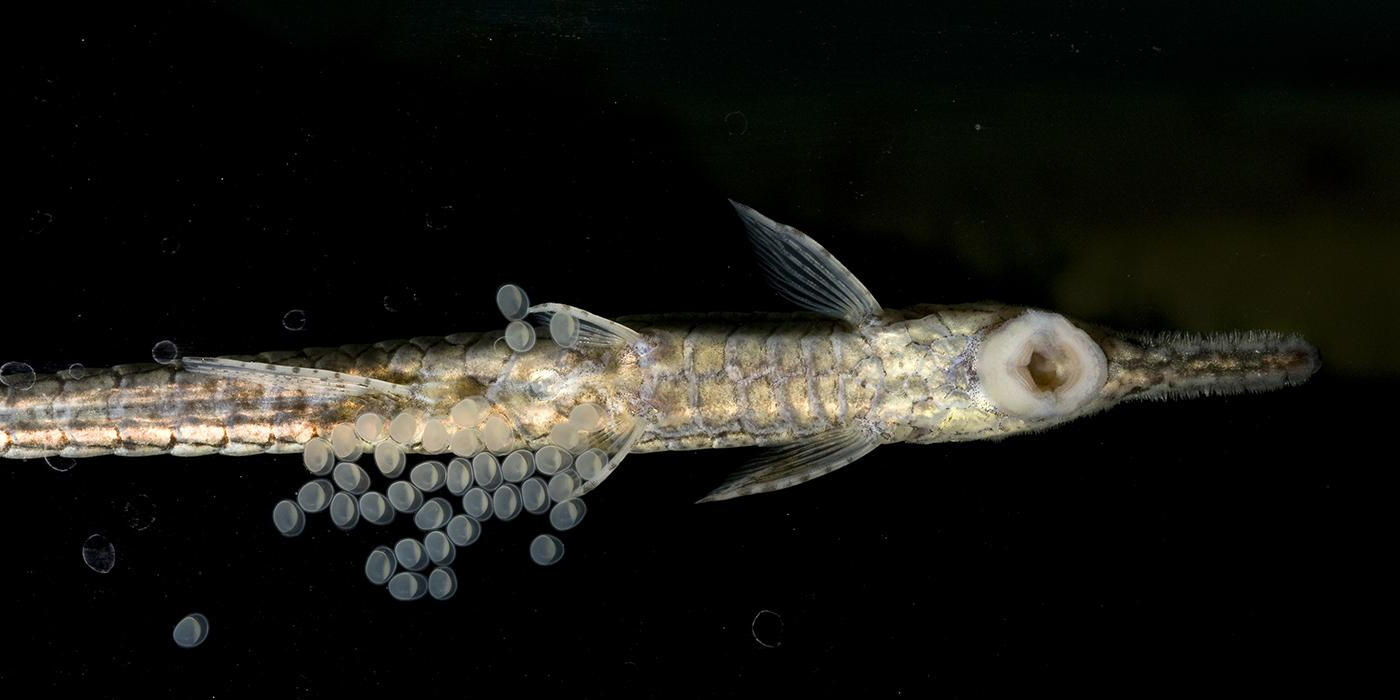Size
Twig catfish grow to between 5 and 7 inches (12.7 to 17.8 centimeters) in length.
Native Habitat
Twig catfish have a relatively broad distribution. They are found in the Amazon, Orinoco and Panara rivers as well as coastal rivers of the Guyana Shield. These catfish prefer an environment with a substrate comprised of submerged dead leaves and sticks which helps them stay well camouflaged.
Lifespan
Twig catfish are named for their long, thin bodies that resemble a twig or stick. Their noses are pronounced, and their bodies are generally brownish, with two lateral dark stripes running from head to tail. The body is protected by bony plates called "scutes."
Thanks to their body shape and coloring, twig catfish can hide easily among sticks, leaves and other vegetation rather convincingly. There is some sexual dimorphism, with females generally having a smaller rostrum and generally rounder in shape when compared to males.
Food/Eating Habits
Twig catfish use dozens of small, uniquely specialized spoon shaped teeth to rasp at wood and algae, their primary source of nutrition. Consuming wood as a primary energy source is extremely rare among vertebrates. Fish in the genus Farlowella are the only known fish evolved to do this.
At the Smithsonian's National Zoo, they are fed a gel diet as well as produce including zucchini and cucumbers. They also enjoy eating all the plants in their exhibit.
Reproduction and Development
An oviparous species, twig catfish lay their eggs in a single layer on vertically situated rocks and vegetation. They do not attempt to hide their eggs in caves or crevices, instead opting to lay them in open water. Males guard fertilized eggs.
Conservation Efforts
The twig fish's status in the wild is unknown. Catfish in the genus Farlowella are generally considered to be relatively common; however, there is little known about each distinct species.
Help this Species
Reduce, reuse and recycle — in that order! Cut back on single-use goods, and find creative ways to reuse products at the end of their life cycle. Choose recycling over trash when possible.
Organize or attend a stream, river, lake or other waterway cleanup in your area to preserve aquatic habitats for local species.
Avoid single-use plastics, such as plastic bottles, bags and utensils. Choosing reusable options instead can help reduce plastic pollution.
Smithsonian's National Zoo and Conservation Biology Institute. (n.d.). Twig catfish. Retrieved January 9, 2026, from https://nationalzoo.si.edu/animals/twig-catfish
Animal News

Meet Our Tiny Terrapin Hatchling ›




